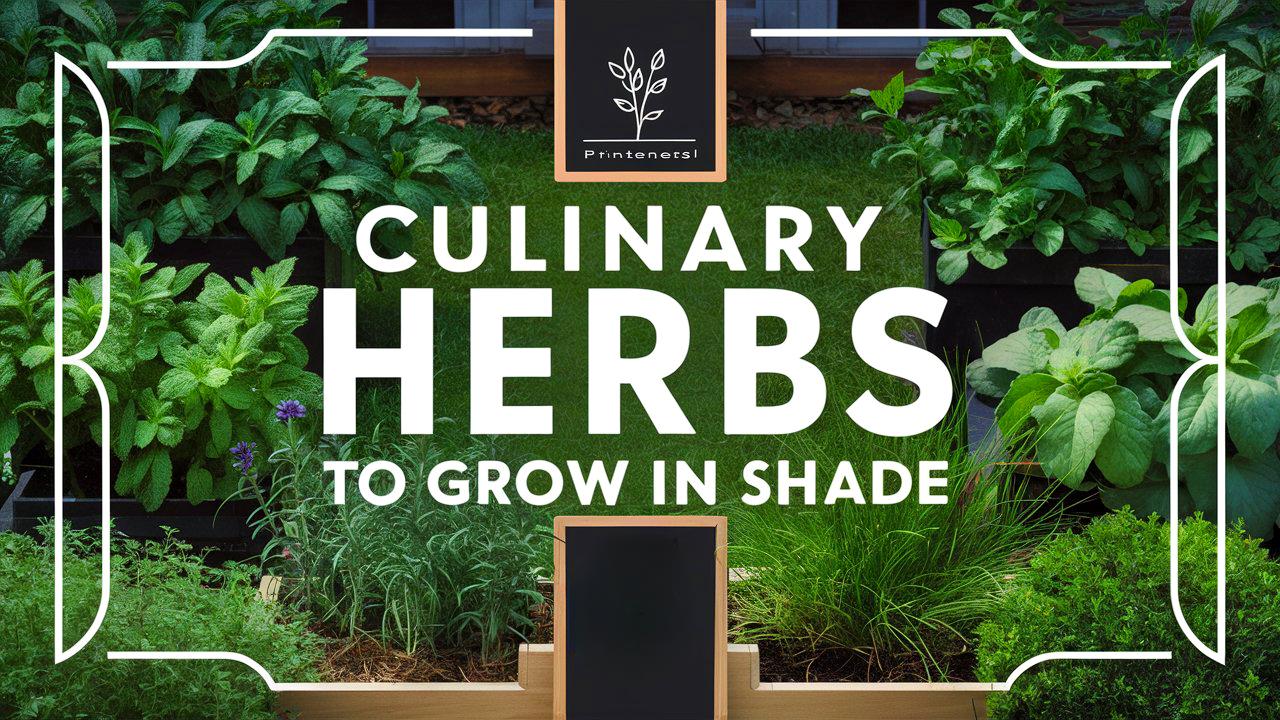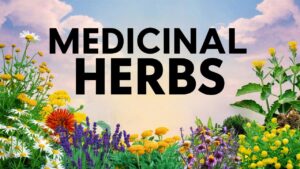Many gardeners believe that successful herb cultivation requires ample sunlight, but this is not necessarily true. If you have a shady garden, you can still enjoy the benefits of growing culinary herbs. Certain varieties thrive in low light conditions, allowing you to cultivate a fragrant, flavorful herb garden even in less-than-ideal light conditions.
In this article, we will explore numerous culinary herbs that flourish in shade, detailing their characteristics, growth requirements, and culinary uses—perfect for beginners who want to make the most of their outdoor spaces.
Angelica (Angelica spp.)
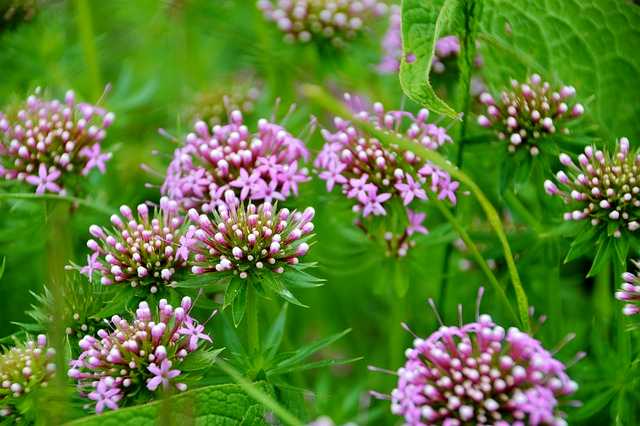
Angelica is a biennial herb that has been used for centuries in culinary applications and traditional medicine. This plant is known for its tall, arching stems and large, umbrella-like clusters of white flowers. Angelica can tolerate partial to full shade, making it suitable for shaded garden areas.
Angelica leaves can be used fresh in salads or as a flavoring for drinks, while the roots can be candied or used to make herbal liqueurs. Additionally, the seeds can be used as a spice. Due to its height, Angelica can also serve as an attractive backdrop in a shade garden. Ensure it receives moist, rich soil so it can thrive.
Anise Hyssop (Agastache foeniculum)
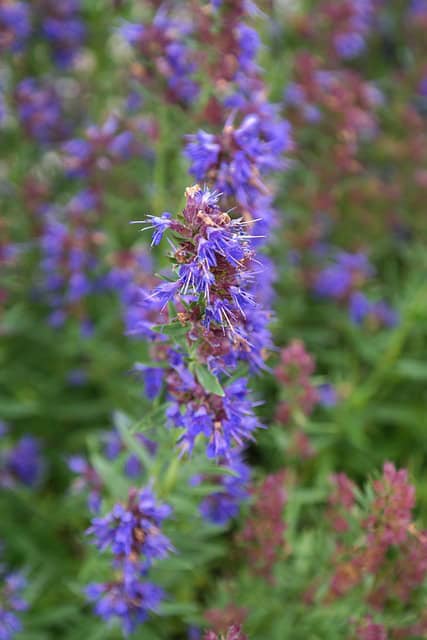
Anise hyssop is a perennial herb that offers a delightful licorice flavor, perfect for both culinary and herbal tea applications. In addition to its strong fragrance and flavor, this herb produces beautiful purple spikes of blooms that attract pollinators.
While Anise Hyssop prefers full sun, it can tolerate some shade, especially if the soil remains consistently moist. It is quite resistant to pests and diseases, making it an ideal choice for novice gardeners. Use the leaves to enhance salads, flavor jellies, or brew aromatic teas. This herb can also be dried for later use, ensuring you have a stash of flavorful goodness ready for when you need it.
Bee Balm (Monarda spp.)
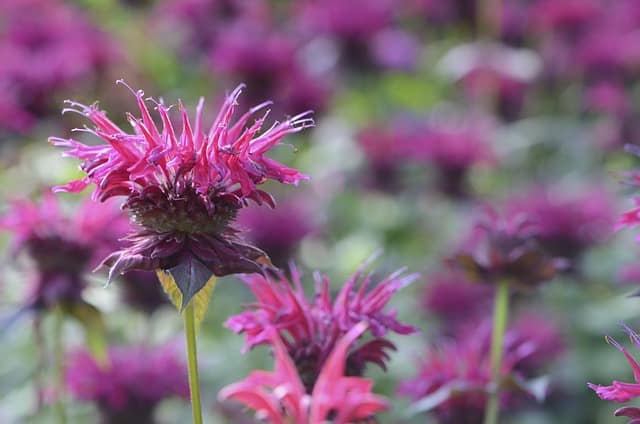
Bee Balm, commonly known as Monarda, is not only a culinary herb but also a beautiful addition to any shade garden. With its vibrant clusters of red, pink, or purple flowers, it is a favorite among pollinators like bees and butterflies, hence the name.
Bee Balm has a minty flavor, which makes it a great addition to salads, marinades, or as a flavor enhancer for meats. When grown in partial shade, Bee Balm prefers well-drained, moist soil and can also thrive in slightly challenging conditions. Regular pruning helps encourage bushy growth and can enhance productivity.
Calendula (Calendula spp.)
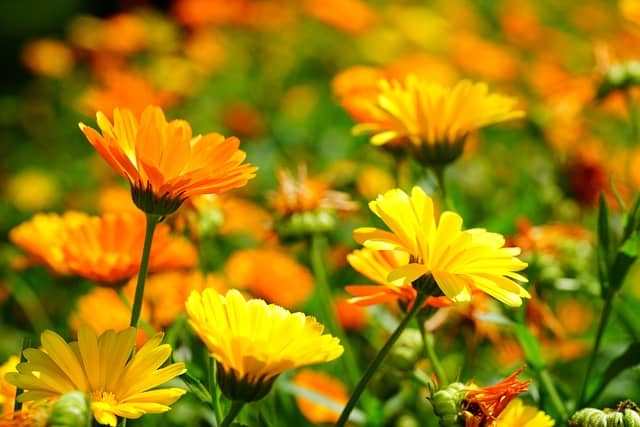
Calendula, or pot marigold, is a vibrant herb that produces cheerful orange and yellow blooms. While primarily known for its ornamental value, Calendula also possesses culinary uses. The petals are edible and can be added to salads, soups, and as a colorful garnish.
This herb can thrive in partial shade, although it grows best with some sunlight during the day. Calendula prefers well-drained soil and can tolerate a range of conditions. Additionally, it is often praised for its medicinal properties, making it a valuable herb to grow in your garden.
Catnip (Nepeta cataria)
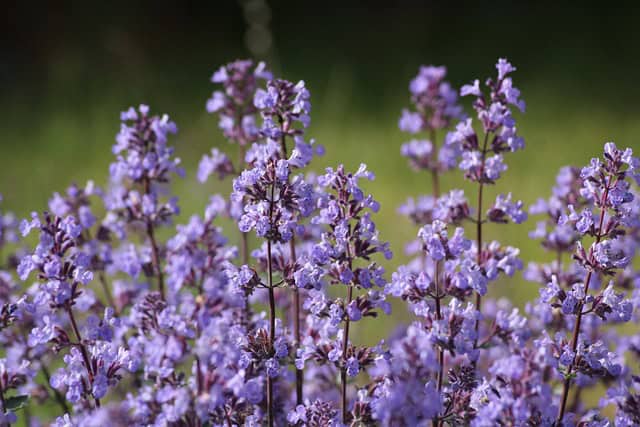
Catnip is primarily known for its effects on cats, but humans can also benefit from this versatile herb. Catnip has a pleasant minty aroma and is frequently used in teas, tinctures, and as a flavoring agent in various dishes.
This herb grows well in shady conditions, though it prefers well-draining soil and a slightly dry environment. Catnip can spread easily, so regular trimming can help maintain its size and prevent it from taking over your garden. Enjoy fresh catnip tea made by steeping the leaves in hot water, offering a calming drink that can be enjoyed any time of day.
Chervil (Anthriscus cerefolium)
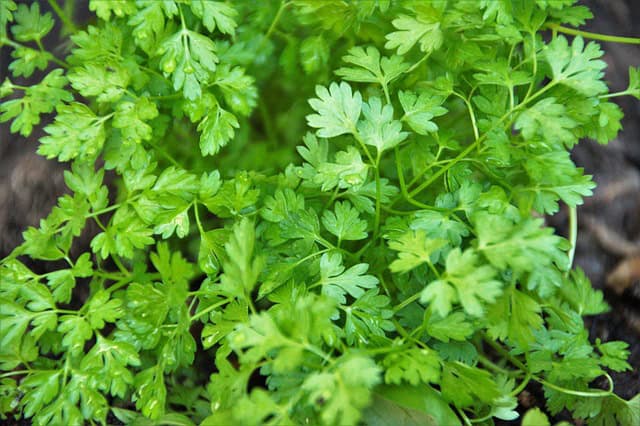
Chervil is a delicate, feathery herb that adds a subtle anise flavor to dishes. Often featured in French cuisine, it is a culinary staple for flavoring soups, salads, and sauces. Chervil is best grown in cooler conditions, making it an ideal herb for partially shaded areas.
This annual can grow in a range of soil types but prefers moist, rich, well-drained soil. Avoid exposing Chervil to strong sunlight, as it can become bitter. Harvest the leaves regularly to encourage robust growth, and enjoy this gourmet herb as part of various culinary creations.
Chives (Allium schoenoprasum)
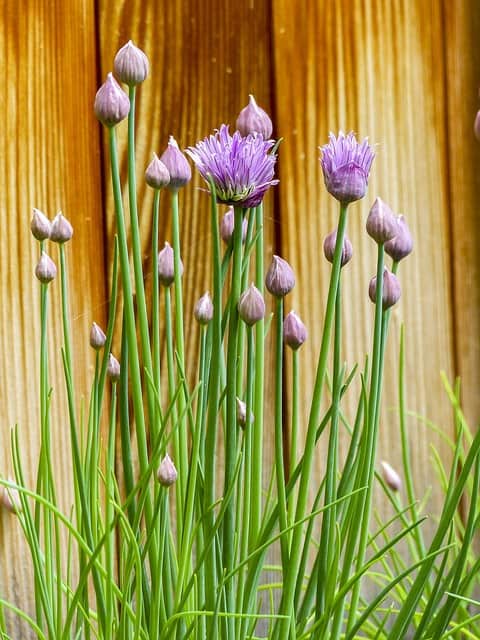
Chives are a must-have for any culinary herb garden, even in shady spots. This hardy perennial offers a mild onion flavor, making it an excellent garnish for soups, salads, and omelets. The purple flowers are also edible and can add color and a slightly sweet taste to food presentations.
Chives thrive in moist, well-drained soil and can tolerate a range of light conditions, including partial shade. They are simple to grow from seeds or divisions and can be harvested by snipping off the leaves as needed. Regular harvesting encourages bushier growth and ensures a continuous supply.
Cilantro/Coriander (Coriandrum sativum)
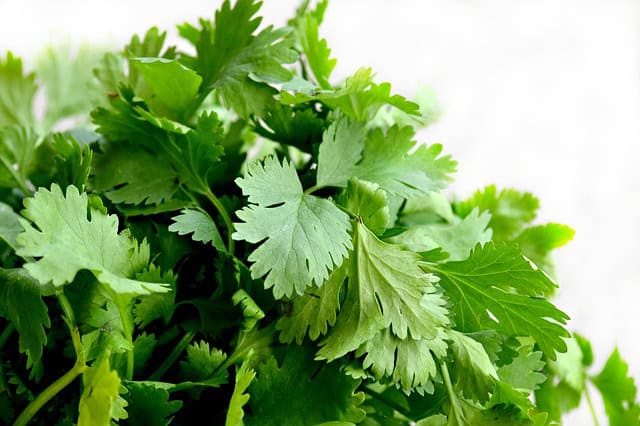
Cilantro, also known as coriander in its seed form, is popular in many global cuisines, particularly in Mexican and Asian dishes. While it prefers cooler temperatures, cilantro can adapt to partial shade, making it a suitable herb for darker areas of the garden.
This fast-growing annual does best in well-drained soil and should be watered regularly to keep it from bolting (flowering prematurely). Cilantro leaves can be harvested continuously, while coriander seeds can be collected once dried. Incorporate fresh leaves into salsas, salads, or as a garnish for curries.
Dill (Anethum graveolens)
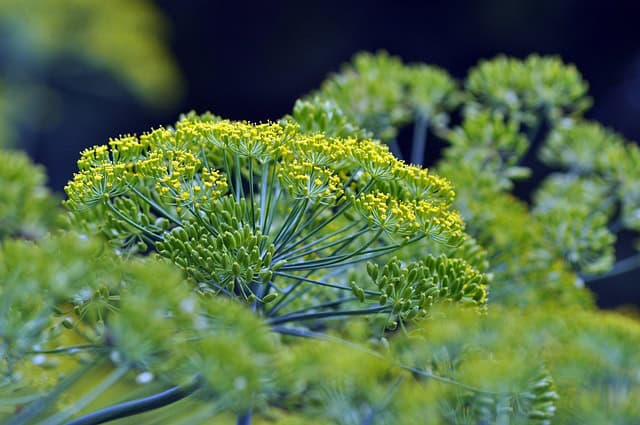
Dill is a favorite herb that adds a fresh, slightly tangy flavor to various dishes, particularly pickles and fish. While it thrives best in full sun, dill can grow in partial shade, especially if provided with well-drained soil and sufficient moisture.
This annual herb typically grows quickly and can reach heights of 3 feet. To encourage larger foliage, pinch back the flowers. Once harvested, use the fronds fresh or preserve them by drying for later use. Dill complements a wide range of foods, from salads to sauces.
Ginger (Zingiber officinale)
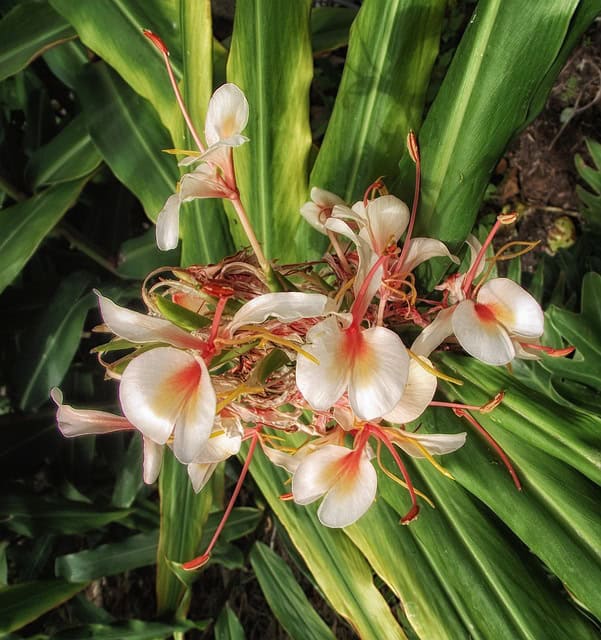
Ginger is a staple in many cuisines, known for its spicy and invigorating flavor. While ginger is a tropical plant that typically thrives in warm, humid environments, it can be grown in partial shade. This herbaceous perennial prefers rich, loamy soil and plenty of moisture.
Ginger can be started from store-bought rhizomes, ensuring they are healthy and fresh. Set them in containers or directly in the ground, keeping the soil consistently damp but not overly wet. Harvest ginger after about 8-10 months by carefully digging up the rhizomes. Fresh ginger is a delightful ingredient in teas, stir-fries, and baked goods.
Lemon Balm (Melissa officinalis)
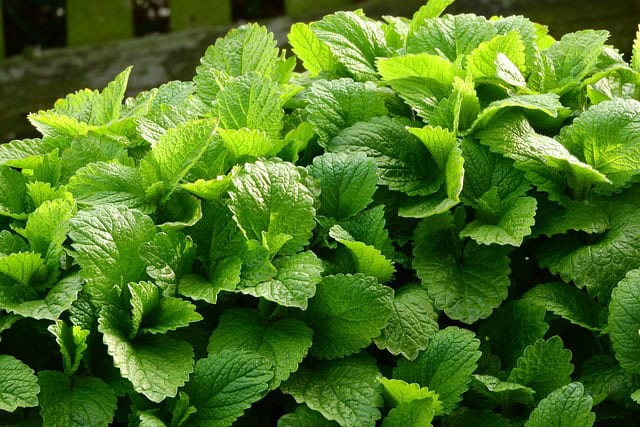
Lemon balm, with its refreshing lemony scent and flavor, is an ideal herb for shady gardens. This perennial is easy to grow and can be used in teas, salads, and desserts, providing a citrusy twist without the acidity of lemons.
Aim for well-drained soil and consider growing lemon balm in containers to manage its spread. Regular pruning promotes bushy growth and prevents woody stems. You can harvest the leaves as needed, but be careful to leave enough for the plant to continue thriving. The calming properties of lemon balm also lend itself well to herbal infusions that promote relaxation.
Loveage (Levisticum officinale)
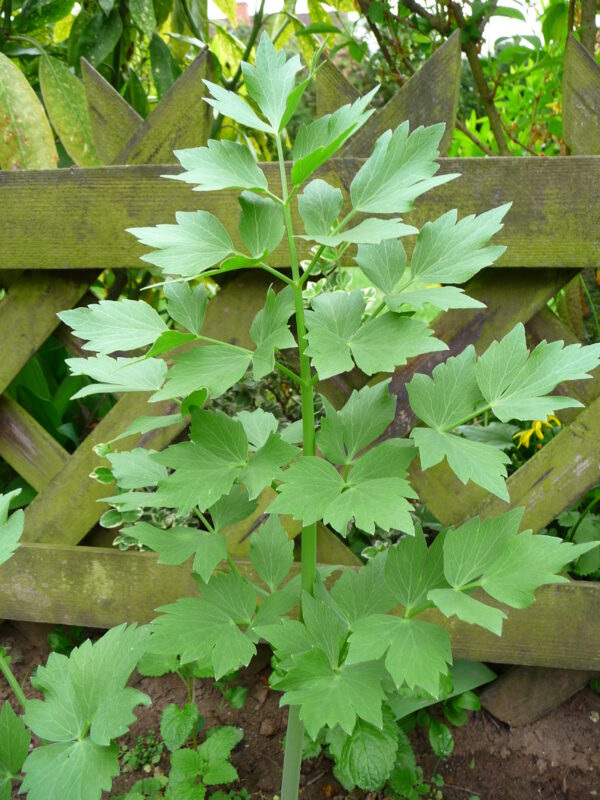
Loveage is an herb that offers a strong, celery-like flavor, making it a great addition to soups, stews, and salads. This perennial herb can easily adapt to partial shade, yet requires rich, moist soil for optimal growth.
Loveage can reach up to 5 feet tall, providing an ornamental aspect to your garden as well. Regular harvesting of the leaves, stems, and flowers helps encourage bushier growth and allows you to enjoy its robust flavor. Due to its size and stature, it makes a unique addition to any culinary herb collection.
Marjoram (Origanum majorana)
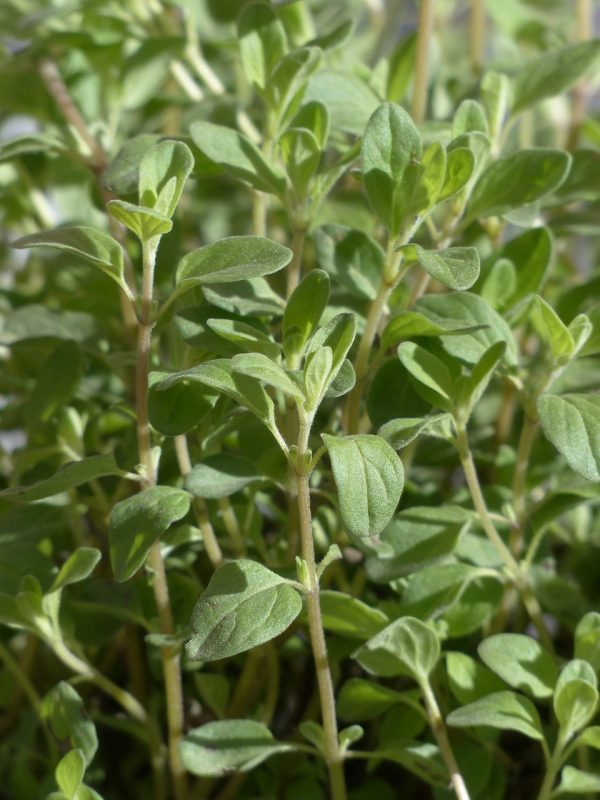
Marjoram offers a sweet, aromatic flavor and is a wonderful addition to Mediterranean cuisine. This perennial herb can be grown in partial shade, although it prefers full sun. However, in cooler climates, marjoram can do just fine with some protection from direct sunlight.
Plant marjoram in well-drained soil. Regular watering is important to keep the plant healthy, but avoid excessive dampness. Harvest the leaves regularly to stimulate growth, and enjoy during cooking or as a flavorful garnish in various dishes.
Mint (Mentha spp.)
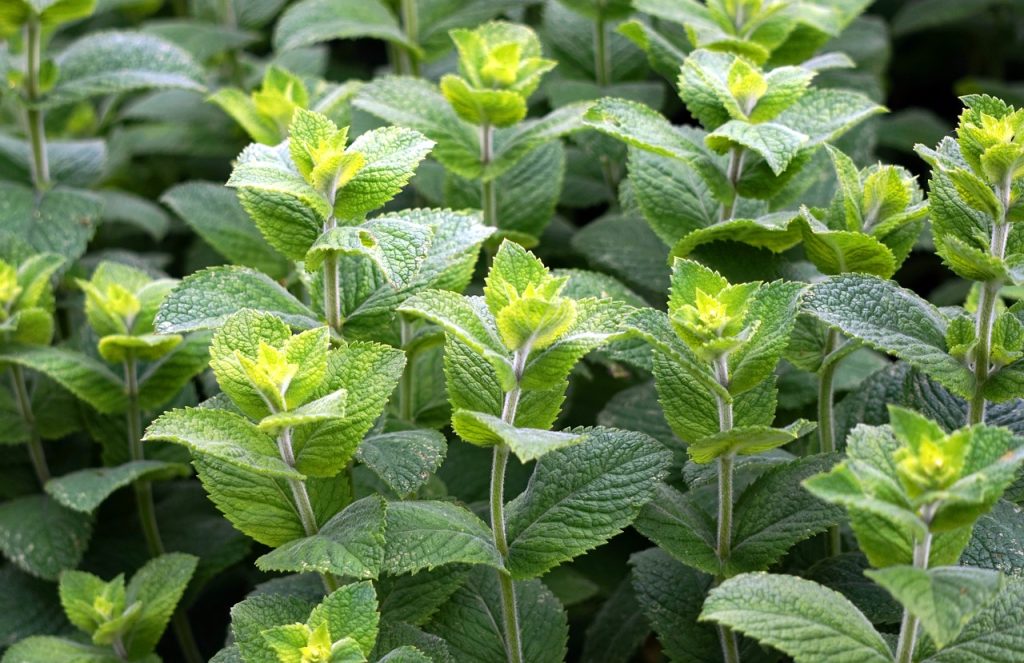
Mint is one of the most versatile herbs, with numerous varieties offering different flavors and aromas, from peppermint to spearmint. It’s one of the best herbs for shady gardens, as it can easily thrive in moist, rich soil while tolerating partial shade.
Mint grows vigorously and can spread quickly, so consider using containers to keep its growth in check. The fragrant leaves can be used in drinks, desserts, or savory dishes. Mint tea is a refreshing beverage enjoyed hot or iced, and its culinary applications are virtually limitless—it can elevate salads, sauces, and garnish desserts.
Oregano (Origanum vulgare)
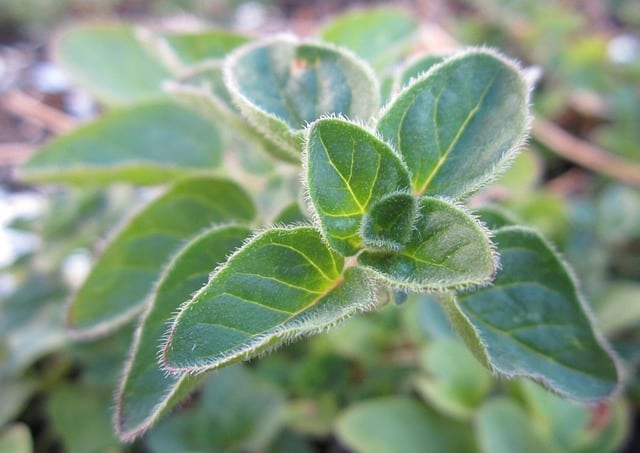
Oregano is an essential herb in Mediterranean cuisine, known for its robust flavor and aroma. While it prefers full sun, oregano can thrive in partially shaded areas, especially if planted in well-drained soil.
This perennial grows well in many soil types and requires minimal care. Regular harvesting encourages bushy growth, while dried oregano is excellent for long-term storage. Use this herb to flavor pasta dishes, marinades, and pizzas, bringing a taste of Italy to your culinary creations.
Parsley (Petroselinum crispum)
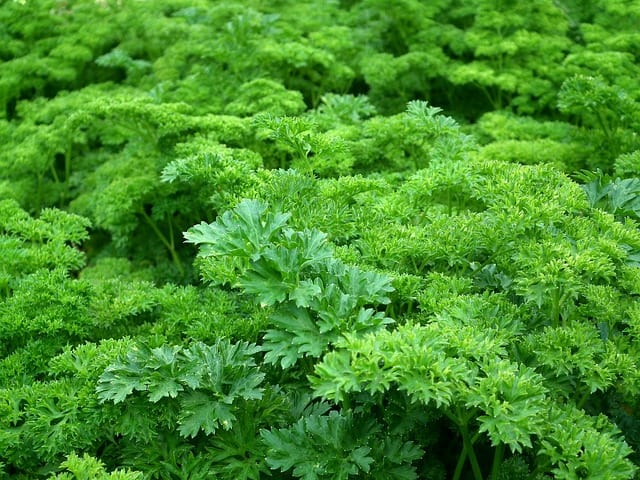
Parsley is a fundamental herb used in many culinary traditions worldwide. It comes in two main varieties: curly and flat-leaf (Italian). Parsley can adapt to partial shade, making it suitable for those with limited sunlight in their gardens.
Plant parsley in rich, well-drained soil and keep it properly watered. This biennial herb can reach up to 2 feet in height and should be harvested regularly to promote leafy growth. Use fresh parsley as a garnish or flavoring agent in numerous recipes, from salads to sauces.
Rosemary (Salvia rosmarinus)
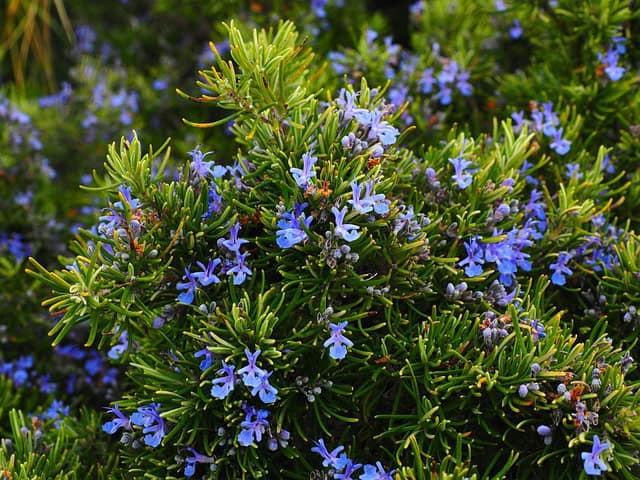
Rosemary is a robust herb known for its fragrant leaves and culinary versatility. While it typically prefers full sun, rosemary can survive in partial shade, although it may become leggy. This perennial shrub requires well-drained soil and can tolerate drought once established.
Regular pruning keeps rosemary bushy and productive. Use fresh leaves for enhancing meat marinades, roasted vegetables, or infused oils. Dried rosemary retains its flavor well and can also be used in various dishes.
Sage (Salvia officinalis)
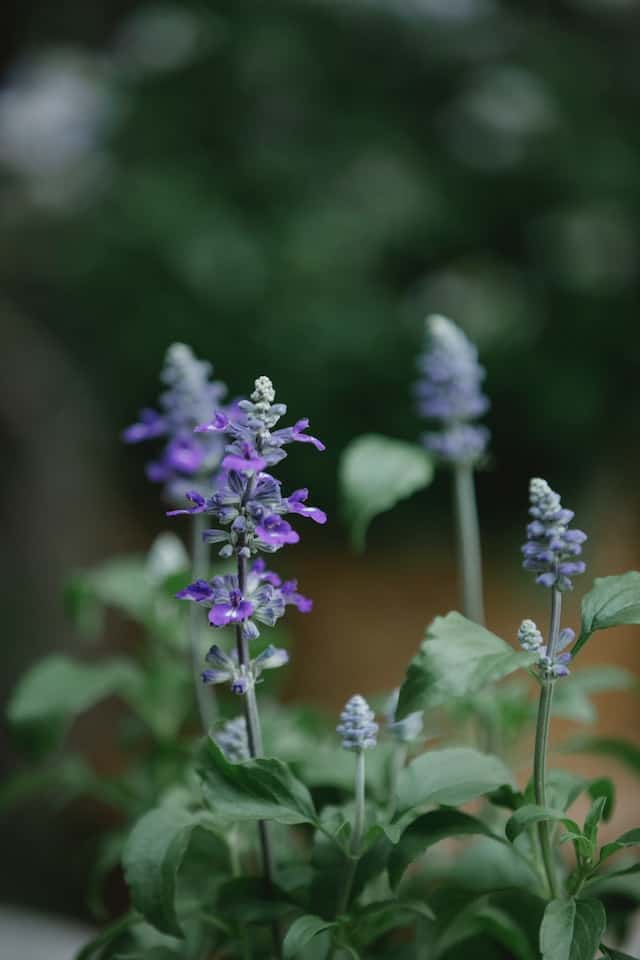
Sage is an aromatic herb that pairs beautifully with various foods, particularly meats and rich sauces. This perennial can tolerate partial shade, thriving in well-drained soil and moderately moist conditions.
Sage is a hardy herb that can withstand cold winters, and it should be pruned regularly to encourage density. Fresh sage leaves can be used in cooking, while dried sage maintains flavor for later use. Incorporate sage into savory dishes, be it in the form of stuffing for poultry or infused in oils.
Sorrel (Rumex acetosa)
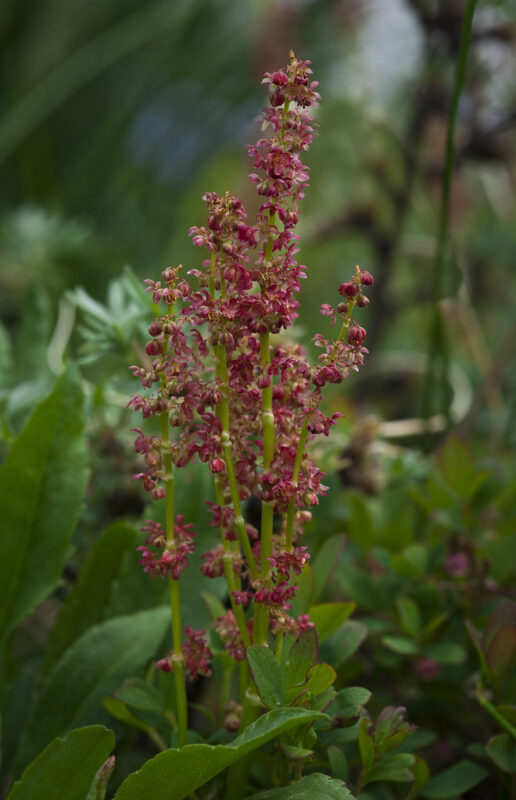
Sorrel is a perennial herb known for its tangy, lemony flavor. This distinctive taste makes it a delightful addition to salads, soups, and sauces. Sorrel can thrive in partial shade, growing well in moist, nutrient-rich soil.
Growth is rapid during spring, so regular harvesting can prevent it from bolting too soon. You can enjoy sorrel leaves as fresh salad greens, sautéed, or blended into sauces. This herb’s unique flavor can elevate a simple dish into something extraordinary.
Sweet Cicely (Myrrhis odorata)
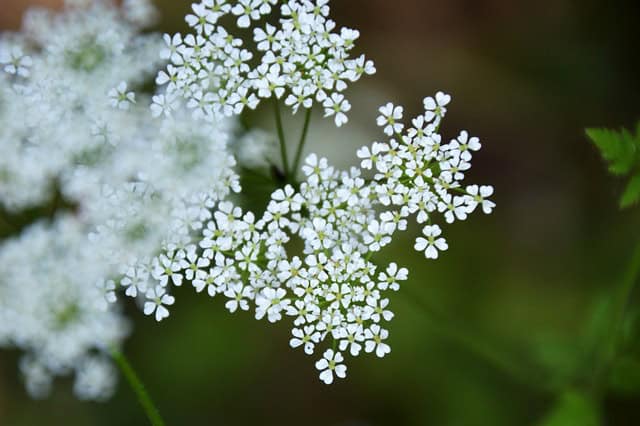
Sweet Cicely is a lesser-known culinary herb that offers a sweet, anise-like flavor. This perennial can thrive in shady areas, preferring rich, moist soil. Sweet Cicely typically grows to about 2-3 feet tall and features delicate white flowers in the spring.
Use the leaves fresh or dried in baking, herbal teas, or as a flavoring for desserts. The seeds and roots are also edible and can be used similarly. Regular harvesting encourages bushier growth and prolongs the plant’s life.
Sweet Woodruff (Galium odoratum)
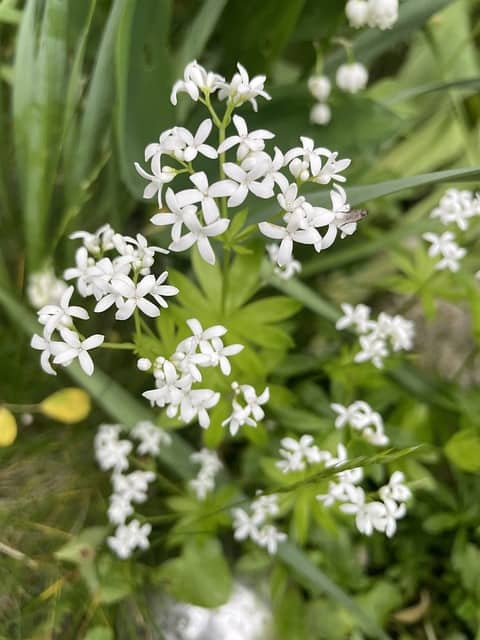
Sweet Woodruff is a charming ground cover herb known for its fragrant foliage and delicate white flowers. It thrives in shady, woodsy areas and prefers well-drained soil.
The leaves are often dried and used in potpourri or as a flavoring in wines and desserts. Sweet woodruff is also traditionally used in May wine, adding a delightful herbal note to this refreshing drink. Harvest regularly to promote growth and to enjoy its aromatic qualities.
Tarragon (Artemisia dracunculus)
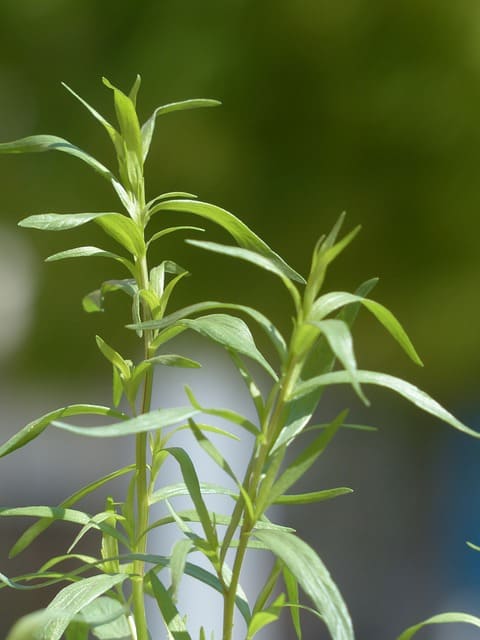
Tarragon is an elegant herb famous in French cuisine, particularly in making sauces like Béarnaise. This perennial plant does well in partial shade, though it prefers full sunlight. It thrives in well-drained soil and should be watered regularly.
Regular harvesting encourages healthy growth and prevents the plant from becoming too woody. Use fresh tarragon in salads, dressings, and sauces. Dried tarragon retains its unique flavor and can be used in cooking throughout the year.
Thyme (Thymus spp.)
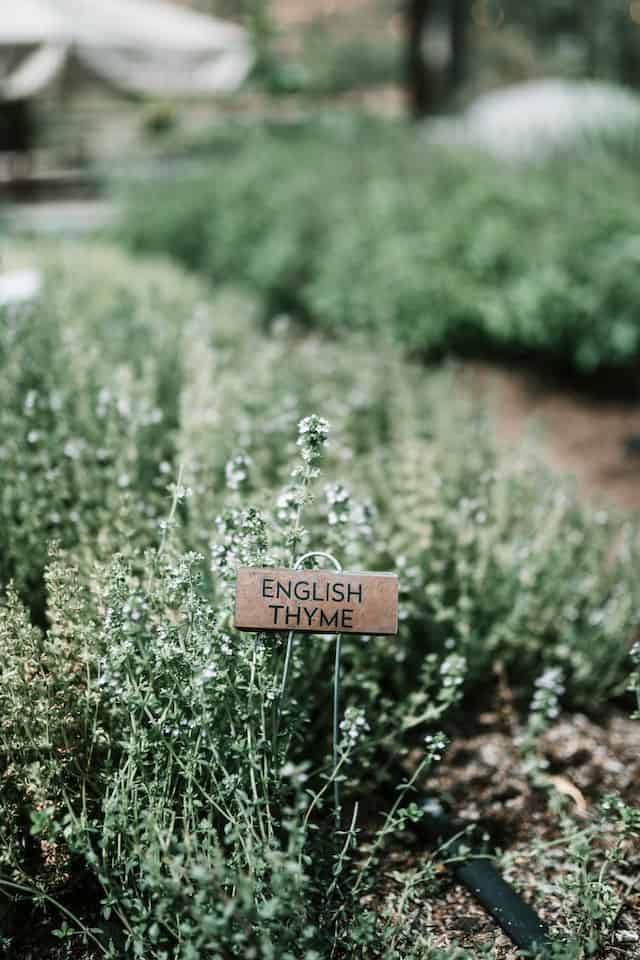
Thyme is a classic culinary herb that pairs well with various dishes, including meats, soups, and stews. While it prefers full sun, thyme is surprisingly adaptable to partial shade and can thrive in well-drained soil.
This hardy perennial can be grown in containers or in the ground and does well in dry conditions once established. Regular harvesting encourages bushy growth and prevents flowering, which can affect flavor. Use fresh or dried thyme to elevate the taste of your culinary creations.
Winter Savory (Satureja montana)
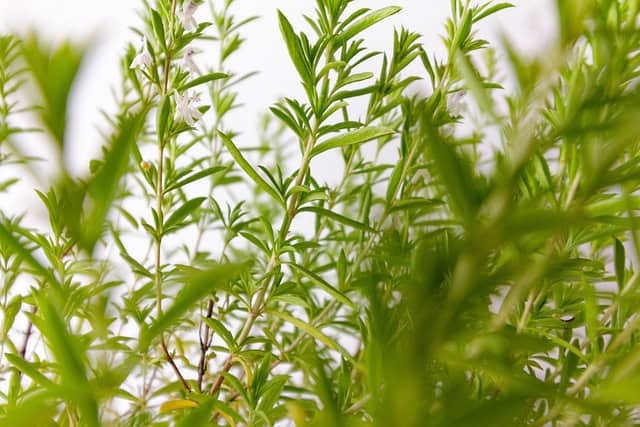
Winter Savory is an aromatic herb with a peppery flavor, similar to oregano and thyme, often used in Mediterranean and Eastern European cooking. It thrives in well-drained soil, preferring sunny to partially shaded conditions.
This perennial can grow up to 12 inches tall and is quite resilient, requiring little care once established. Harvest the leaves regularly to encourage a full, bushy plant. Incorporate winter savory into stews, beans, and meat dishes for a savory boost.
Final Thoughts
Gardening in shady conditions doesn’t mean compromising on flavor or culinary variety. Many herbs can flourish and provide delightful tastes and aromas, even when sunlight is limited. With the right conditions—moist, rich soil and regular care—these culinary herbs can enhance your kitchen experience, offering fresh ingredients that elevate your dishes.


